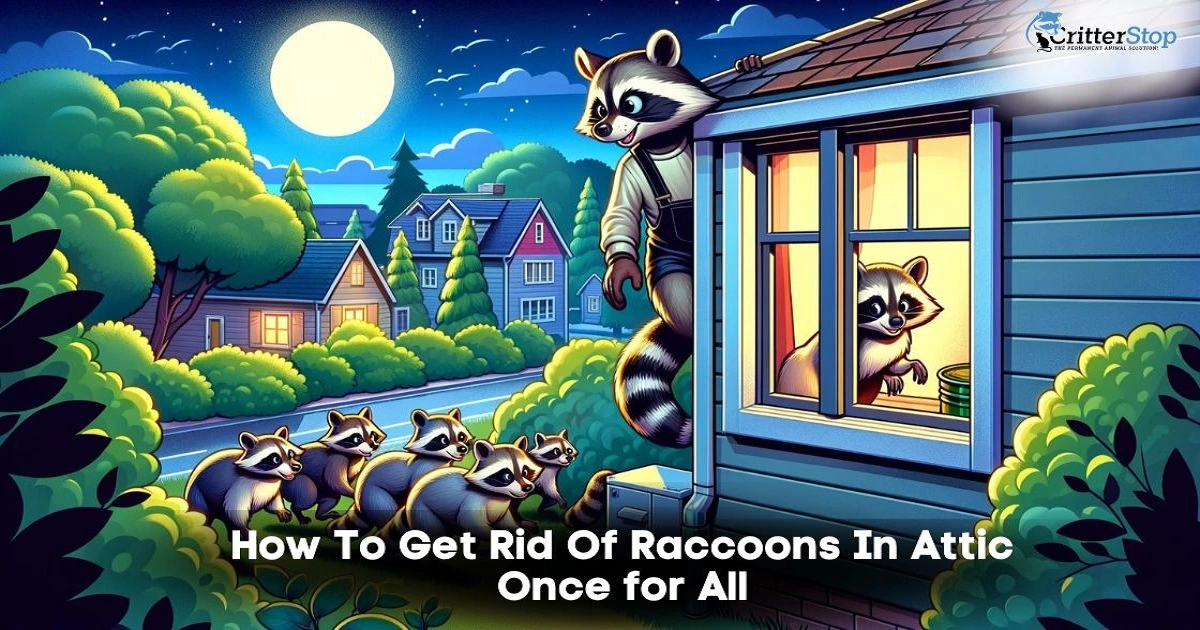
Although raccoons are known for being little rascals, they can also be a significant annoyance when they invade your home environment, leading to a serious raccoon problem. One of the most common places for them to do so is the attic. Considering that raccoons are capable of causing damage to your property and posing a threat to your health and the health of your family, this can be a significant problem for homeowners.
If you have reason to believe that raccoons are in your attic, it’s imperative that you take immediate action. Raccoons can cause a great deal of damage, including chewing through electrical wires and insulation, which presents a number of risks, including the possibility of fires. In addition, they can carry diseases that can be passed on to humans, such as rabies and roundworm.
In this guide, we will discuss how to determine whether or not you have raccoons living in your attic and the necessary actions to take to get raccoons out of the attic safely and effectively.
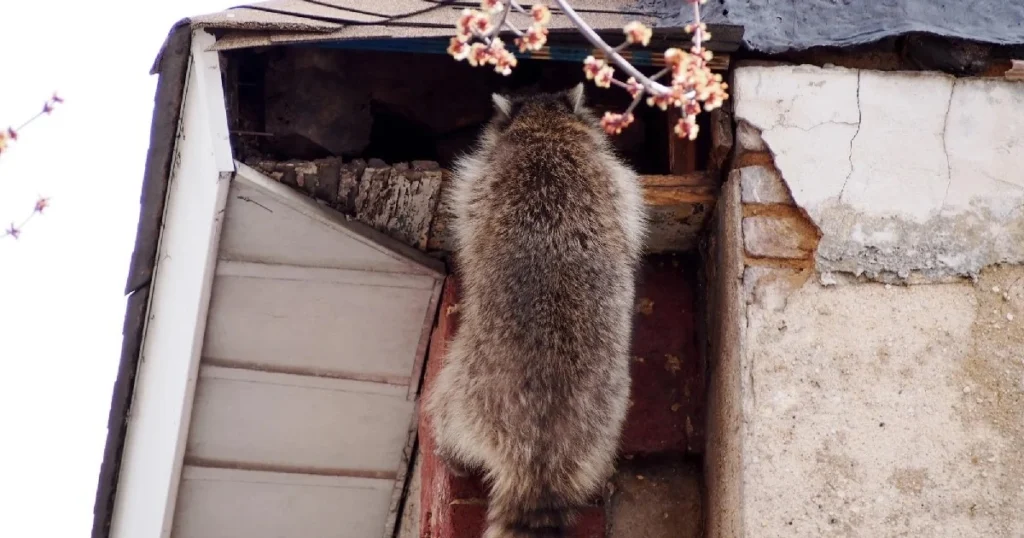
The majority of the time, raccoons are nocturnal animals, which means that they are most active during the nighttime hours. They have a reputation for being opportunistic feeders, meaning that they will search for food wherever they could possibly find it. Given that they are able to access garbage cans and other sources of food easily, it is not surprising that they are frequently discovered in urban areas.
During the day, raccoons typically sleep in their den, which can be situated in various locations, such as trees, burrows, or attics. Raccoons that make their home in an attic typically make their way up and down the stairs during the night, as this is the time of day when they are most active. It’s not unusual to see a female raccoon or a mother raccoon pursuing this course of action as they are the most prone to seek shelter. Raccoons, as wild animals, possess natural instincts that drive them to seek out attics as secure places for denning, especially when they are expecting to give birth and raise their young.
If you have reason to believe that raccoons are residing in your attic, there are a few indicators that you should keep an eye out for. The sound of scratching or scurrying coming from the attic is one of the most obvious signs that indicates the presence of a problem. In addition, you might find stains in the attic that are caused by droppings or urine, as well as damage to the insulation and other materials.
It’s essential to keep in mind that raccoons can be dangerous if they perceive that they are being cornered or threatened. There is evidence that they are carriers of diseases such as rabies, and they have the potential to attack if they believe that they or their young are in mortal danger. Raccoon removal is best left to professionals because they have the experience and equipment necessary to remove them from your property in a safe manner.
If they reside in an attic, they will typically visit and leave during the night. Scratching, droppings, and urine stains are some of the signs that you should look out for if you have any reason to believe that raccoons are living in your attic.
Risks and Dangers of Raccoons in the Attic
When raccoons invade your attic, they can cause much damage and pose several risks. In this section, we will discuss the health risks and property damage that raccoons can cause in your attic.
Raccoons are known to carry several diseases that can be transmitted to humans, including rabies, roundworm, and leptospirosis. If a raccoon bites or scratches you, it is essential to seek medical attention immediately to prevent the spread of any diseases.
In addition to direct contact, raccoon droppings and urine can pose a health risk. Their feces can contain harmful bacteria and parasites that can cause serious illnesses in humans. It is important to wear protective gear, including gloves and a mask when cleaning up raccoon droppings and urine to avoid raccoon roundworm.
Raccoons can cause significant damage to your attic, including chewing through electrical wiring, insulation, and wooden beams. They can also tear up ductwork and cause water damage by chewing through pipes. Raccoon feces can also cause health hazards.
If left unchecked, raccoons can cause extensive damage to your property, leading to costly repairs. To prevent further damage, it is essential to take action as soon as you suspect raccoons are living in your attic.
Overall, raccoons in the attic can be dangerous to your health and your property. Getting rid of raccoons in the attic is crucial to prevent further damage and reduce the risk of disease transmission. It is recommended to contact a professional wildlife removal service to safely and effectively remove raccoons from your attic.
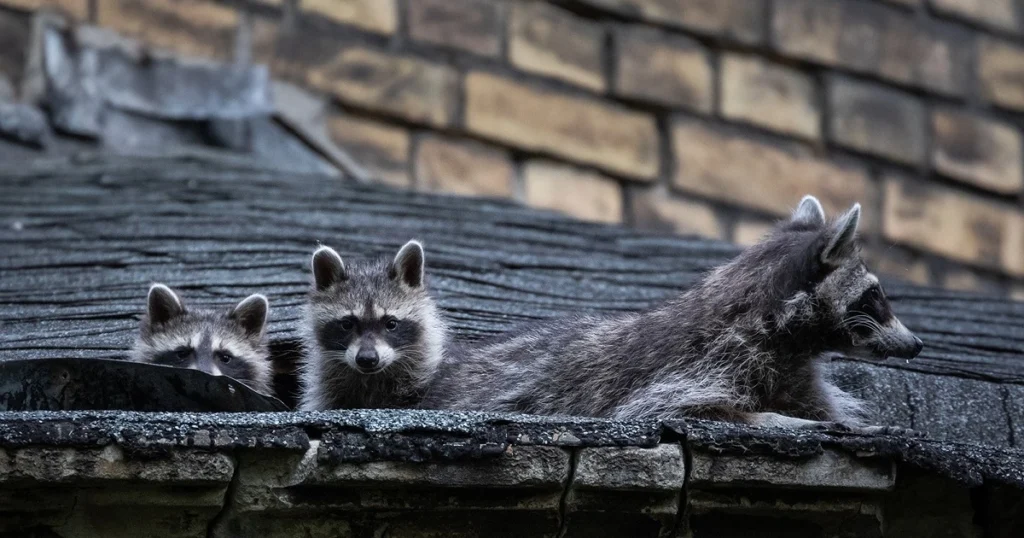
When dealing with raccoons in the attic, it’s important to be aware of wildlife laws in the area. In many places, raccoons are considered a protected species, and it is illegal to harm or kill them without a permit. It is important to check with local authorities to ensure that any actions taken are legal and in compliance with wildlife regulations.
While it may be tempting to resort to lethal methods to eliminate raccoons in the attic, humane removal practices should be considered. This not only avoids potential legal issues but also ensures that the animals are treated with respect and compassion.
One common method of humane removal is the use of live traps in tandem with other methods, such as raccoon eviction fluid. These traps allow the raccoon to be captured and then released back into the wild in a safe location. It is important to note that live traps should be checked regularly to ensure that the animal is not left trapped for an extended period of time.
Another option is to use exclusion techniques, such as sealing off entry points to the attic. This can prevent raccoons from entering the space without harming the animals.
It’s important to remember that any removal methods used should avoid harm to both the raccoons and any people involved.
Raccoons in attics can be a real problem for homeowners. Prevention is key to avoiding these unwanted guests. Several strategies can help keep raccoons out of your attic. To further enhance your prevention measures, consider incorporating methods to repel raccoons, such as using lights, noises, and specific smells, including synthetic predator urine or pheromones. Be mindful of the potential risks associated with repellents and seek professional advice if necessary.
One of the most important prevention strategies is to secure all entry points to your attic. Raccoons are excellent climbers and they can easily gain access through small openings. Common entry points include vents, chimneys, and roof edges. It is recommended to cover these openings with wire mesh or hardware cloth. The mesh should be securely fastened to prevent raccoons from pulling it away. It is also important to check for gaps or similars and seal them to avoid transit.
Another effective strategy is to use environmental deterrents. Raccoons are deterred by strong smells and loud noises. One option is to use predator urine, which can be purchased at many garden stores. The urine should be sprayed around the perimeter of the house and near entry points. Another option is to use bright lights or loud music to deter raccoons. Motion-activated devices can be installed to turn on lights or music when raccoons are detected.
By following these prevention strategies, homeowners can greatly reduce the likelihood of raccoons in their attics. Being proactive and taking steps to secure entry points it’s vital when it comes to environmental deterrents.
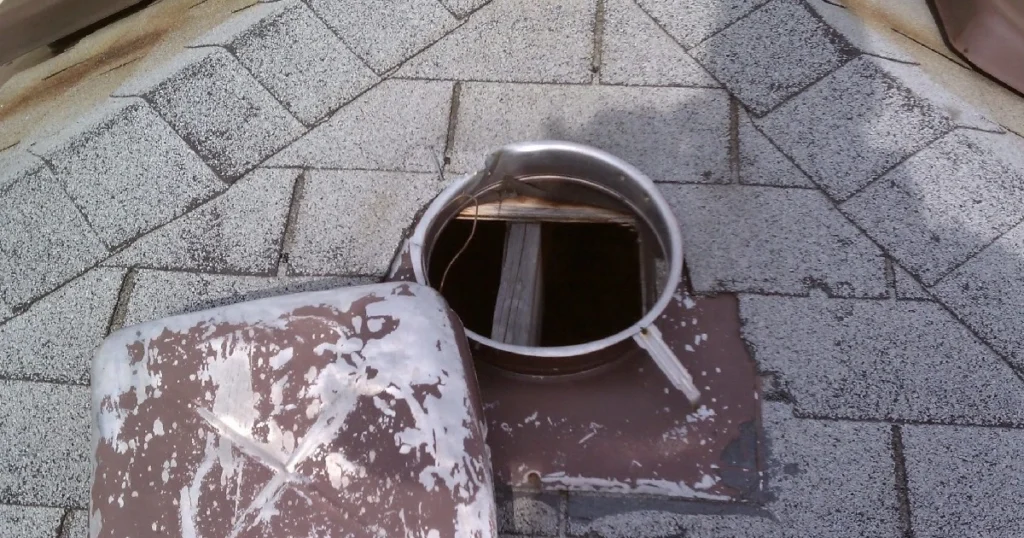
Before attempting to remove raccoons from an attic, it is important first to locate their entry points. Raccoons are skilled climbers and can easily gain access to an attic through openings in the roof, vents, or gaps in the eaves. You must inspect the exterior of the home to identify any potential entry points.
Once any potential entry points have been identified, it’s necessary to confirm that they are being used by raccoons. This can be done by observing the area for signs of activity, such as footprints, droppings, or damage to the surrounding area. If raccoon activity is confirmed, it is important to take steps to prevent further access.
Once raccoon activity has been confirmed, it is important to assess the extent of the infestation. This can be done by inspecting the attic for signs of activity, such as droppings, urine stains, or damage to insulation or wiring.
It’s important to note that raccoons can be aggressive and may pose a threat to humans and pets. The best course of action is to have a professional wildlife removal service to safely and humanely remove raccoons from the attic.
In order to prevent future infestations, it is important to seal all potential entry points and make any necessary repairs to the roof and surrounding areas. It is also recommended to remove any food or water sources from the area, such as bird feeders or pet food, to discourage raccoons from returning.
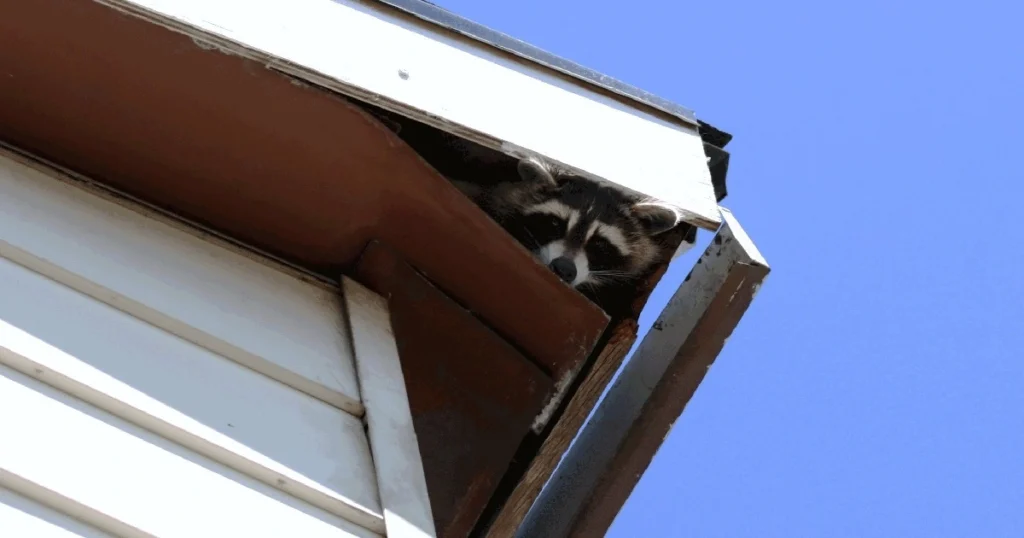
So, how do you get raccoons out of your attic? There are two primary methods for removing raccoons from the attic: trapping and relocation and exclusion techniques. Utilizing a raccoon trap or various raccoon traps is essential in the humane and effective removal process.
Trapping raccoons through trapping and relocation is a common method used to handle these animals.
The goal of removing all the raccoons from the attic, including male raccoons and mother raccoons, is crucial to ensure the complete elimination of the infestation. Trapping and relocation are among the most common methods for eliminating raccoons in the attic. This involves setting up traps in the attic, baiting them with food, and waiting for the raccoons to be caught. Once the raccoons are caught, they are typically released into the wild in a location far away from the property.
We must note that trapping and relocation are not legal in all states, but they are in Texas. Before attempting this method, it is important to check with local authorities to ensure that it is legal and to obtain any necessary permits.
Exclusion techniques involve sealing up all entry points to the attic to prevent raccoons from entering. This includes sealing holes in the roof, walls, and foundation and installing barriers over vents and other openings.
Exclusion techniques are often the preferred method for removing raccoons from the attic, as they are more humane and do not require trapping and relocating the animals. However, it’s challenging to find and seal up all entry points, and it may be necessary to hire professionals to ensure that the job is done correctly.
Overall, trapping, relocation, and exclusion techniques can be effective for removing raccoons from the attic. The best method depends on the specific situation and the property owner's preferences.
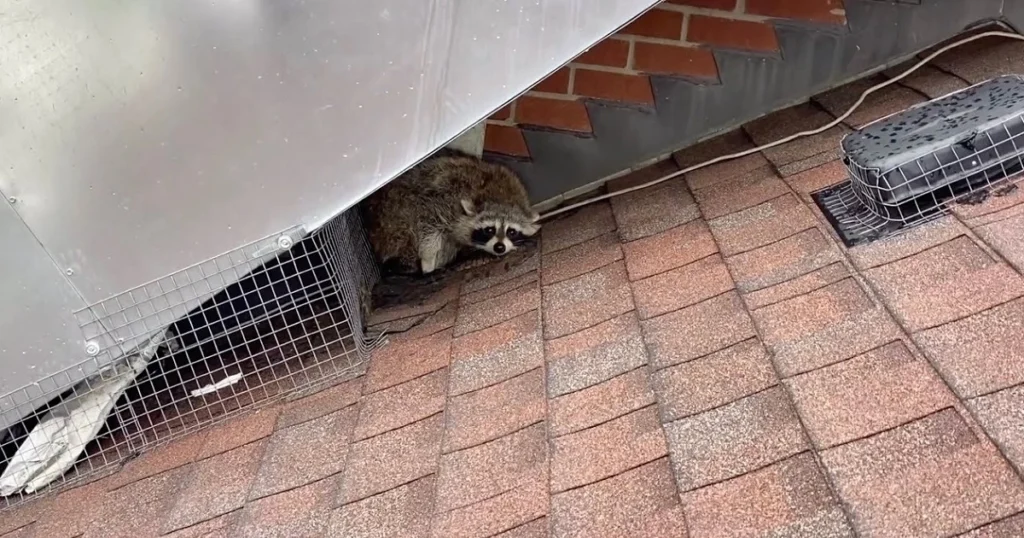
Now the question is, who to call to get raccoons out of the attic? If you have raccoons in your attic, consider calling a professional for assistance. While some DIY methods may be effective, a professional service can ensure that the raccoons are safely and humanely removed from your property.
It's recommended to call a professional if you are experiencing any of the following:
Attempting to remove raccoons on your own is dangerous if you don’t know what you’re doing. It can result in injury to both you and the raccoons. Professional services such as the ones offered by Critter Stop have the experience and equipment necessary to safely remove the raccoons and prevent them from returning.
When choosing a professional service to remove raccoons from your attic, it’s important to consider the following:
In this day and age, it’s easy to check the reputation of any pest removal service. Critter Stop has all the right credentials you’re looking for, which makes it a top option to call for your raccoon removal in the attic needs.
Remember, dealing with raccoons in your attic can be a serious issue. It is important to take action quickly and call a professional service to ensure that the raccoons are safely and humanely removed from your property.
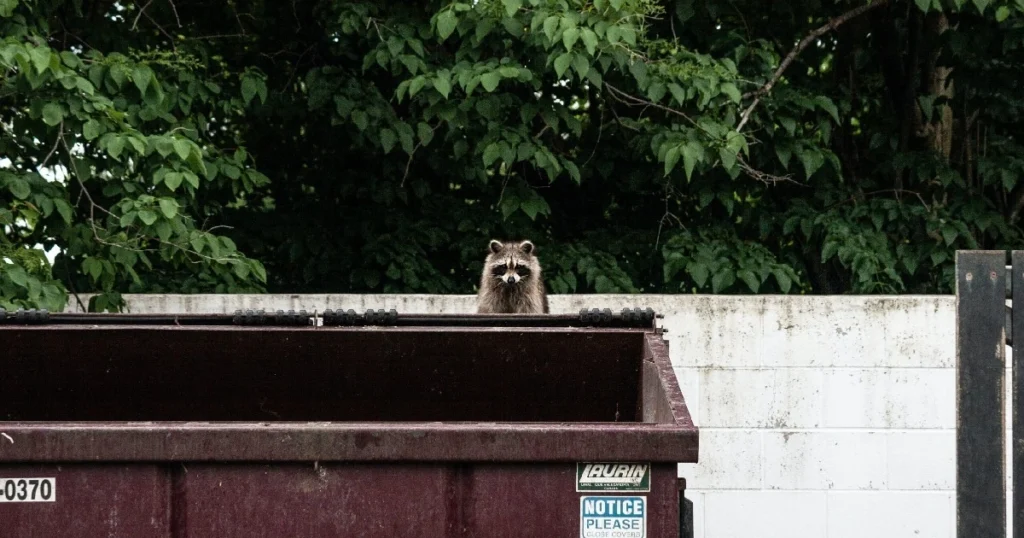
After successfully removing the raccoons from the attic, it's important to clean up their mess and repair any damage they may have caused. This will not only restore the attic's structural integrity but also prevent potential health hazards.
Raccoons can carry a variety of diseases and parasites, such as rabies, roundworm, and fleas. Therefore, it's crucial to wear protective gear, like gloves and a mask, when cleaning up their waste.
First, we must remove contaminated insulation, feces, and urine-soaked materials. Pest control experts will use a vacuum cleaner with a HEPA filter to clean up any remaining debris. Then, disinfect the entire area with bleach and water.
Raccoons can damage the attic's structure by chewing through wires, ripping insulation, and tearing up ductwork. To prevent further issues, it's important to repair any damage as soon as possible.
Inspect the attic thoroughly to identify any damage. Replace any torn or damaged insulation and ductwork. Repair any chewed wires and electrical components.
To prevent future raccoon infestations, seal any potential entry points, such as holes in the roof or walls. Use heavy-duty materials, such as steel mesh or metal flashing, to prevent raccoons from chewing through.
In conclusion, cleaning up and repairing the damage caused by raccoons in the attic is crucial to restoring the space's safety and integrity. Homeowners can prevent potential health hazards and future infestations by following proper decontamination procedures and repairing any damage.
To prevent raccoons from taking up residence in your attic, it is important to conduct regular inspections of your property. This will help you identify any potential entry points and address them before they become a problem. You should inspect your roof, eaves, and siding for any signs of damage or wear that could allow raccoons to enter your home. Additionally, you should inspect your attic for any signs of raccoon activity, such as droppings or damage to insulation.
In addition to regular inspections, you can prevent raccoons from entering your attic by taking preventive measures. First, ensure all entry points are sealed with durable materials such as steel mesh or hardware cloth. This includes vents, chimneys, and gaps or holes in your roof or siding. You should also keep your trees trimmed away from your house to prevent raccoons from getting into your roof.
Another effective way to keep raccoons out of your attic is by making your property less attractive to them. This is achieved by removing potential food sources, such as pet food or bird feeders, from your yard. You must secure your garbage cans with fitting lids and keep your yard free of any type of debris.
By following these steps, you can help keep raccoons out of your attic and protect your home from damage. Regular inspections and long-term prevention measures are key to maintaining a raccoon-free home.

For those who want to learn more about raccoons in attics, there are a variety of educational resources available. These can provide valuable information on how to identify the signs of raccoon infestations, how to prevent them from entering your attic, and how to safely and effectively remove them if they do take up residence.
One great resource for information on raccoons in attics is the website of the Humane Society of the United States. They offer a comprehensive guide on how to deal with raccoons in attics, including tips on prevention, humane removal methods, and what to do if you find baby raccoons in your attic.
Another helpful resource is the website of the National Wildlife Control Operators Association. They offer a directory of licensed and certified wildlife control professionals who can help you safely and effectively remove raccoons from your attic.
For those who prefer to do their own research, there are various books available on the subject of wildlife control. One of the best options is "The Wildlife Removal Handbook: A Guide to Safe and Humane Control of Wildlife in Your Home and Garden" by John O. Whitaker Jr. This book provides detailed information on how to identify and remove various wildlife, including raccoons, from your home.
Remember: attempting to remove raccoons from your attic on your own can be dangerous and should only be attempted by trained professionals. If you are experiencing a raccoon infestation in your attic, it’s recommended that you contact a licensed wildlife control professional for assistance.
When it comes to getting rid of raccoons in your attic, it is always best to call in the professionals. Critter Stop, a professional humane wildlife removal company, is highly recommended for raccoon removal from your property.
Critter Stop has a fantastic reputation, and customer reviews online because it provides high-quality work and great customer service. They use humane methods to remove raccoons from your attic and ensure they do not return. Their team of experts is equipped with the necessary tools and knowledge to safely and effectively get rid of raccoons in your attic.
When you call Critter Stop, they will send a team to your property to assess the situation and provide you with a quote for the removal process. Just dial (214) 234-2616 if you’re in Texas, and they will also provide you with information on how to prevent raccoons from returning to your attic in the future.
Overall, calling a professional like Critter Stop is the best option for getting rid of raccoons in your attic. They have the expertise and experience necessary to safely and humanely remove raccoons from your property.
Raccoons in the attic can pose significant dangers as they can cause structural damage by tearing insulation, chewing on wires, and creating entry points. Their droppings can also carry harmful parasites and diseases, posing health risks to residents. It's crucial to address raccoon infestations promptly to prevent these potential hazards.
Raccoons in the attic can carry diseases such as rabies and roundworm, which can be transmitted to humans and pets. They can also damage insulation, wiring, and other materials in the attic, creating a fire hazard. Additionally, raccoons can be aggressive if they feel threatened, which can put homeowners and their pets at risk.
Raccoons are primarily nocturnal creatures, so they tend to leave the attic during the night in search of food and water. However, in some cases, raccoons may also leave the attic during the day, especially if they feel threatened or if there's a shortage of food sources. It's important to seek professional assistance to address raccoon infestations to ensure the safety of your property and family.
Several signs can help homeowners identify raccoons in their attics. These include scratching or thumping noises coming from the attic, droppings or urine stains, and damage to insulation or other materials. Homeowners may also see raccoons entering or exiting the attic through holes or gaps in the roof or walls.
There are several effective methods for removing raccoons from an attic, including live trapping and exclusion techniques. Live trapping involves setting up a trap in the attic and releasing the raccoon in a safe location. Exclusion techniques involve sealing off all entry points to the attic to prevent raccoons from entering. It is important to hire a professional wildlife removal company to ensure that the raccoons are removed safely and humanely.
Yes, raccoons in the attic can cause structural damage to a home. They can damage insulation, wiring, and other materials, creating a fire hazard. Raccoons can also chew through wood and other building materials, weakening the structure of the home.
The cost of professional raccoon removal from an attic can vary depending on several factors, including the size of the infestation and the location of the home. On average, homeowners can expect to pay between $300 and $500 for professional raccoon removal services.
Raccoons can reside in an attic for several weeks or even months once they have entered. They are nocturnal animals and are most active at night, which can make it difficult for homeowners to detect their presence. It is important to address a raccoon infestation as soon as possible to prevent damage to the home and potential health risks.
Visit our Critter Library and learn more about our furry friends